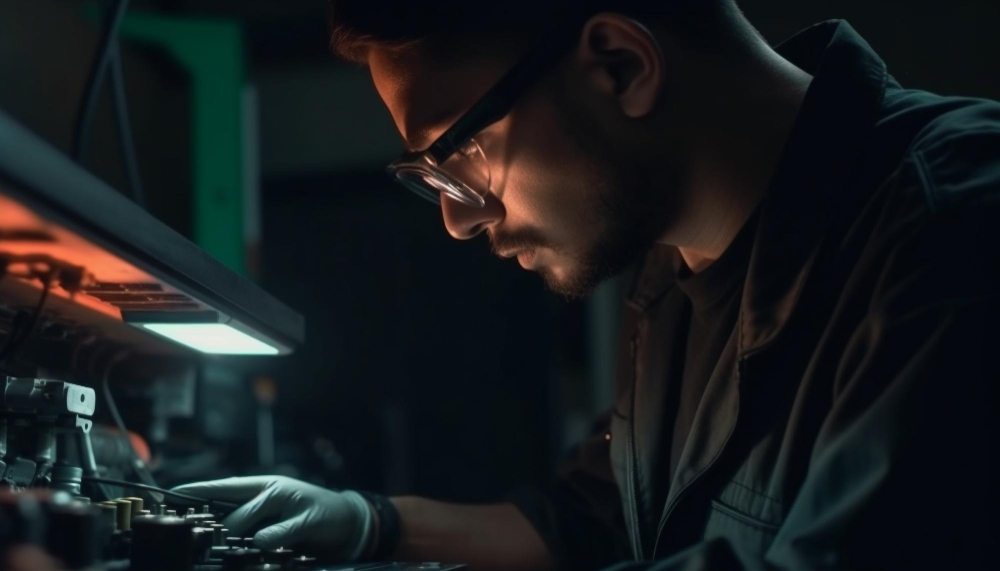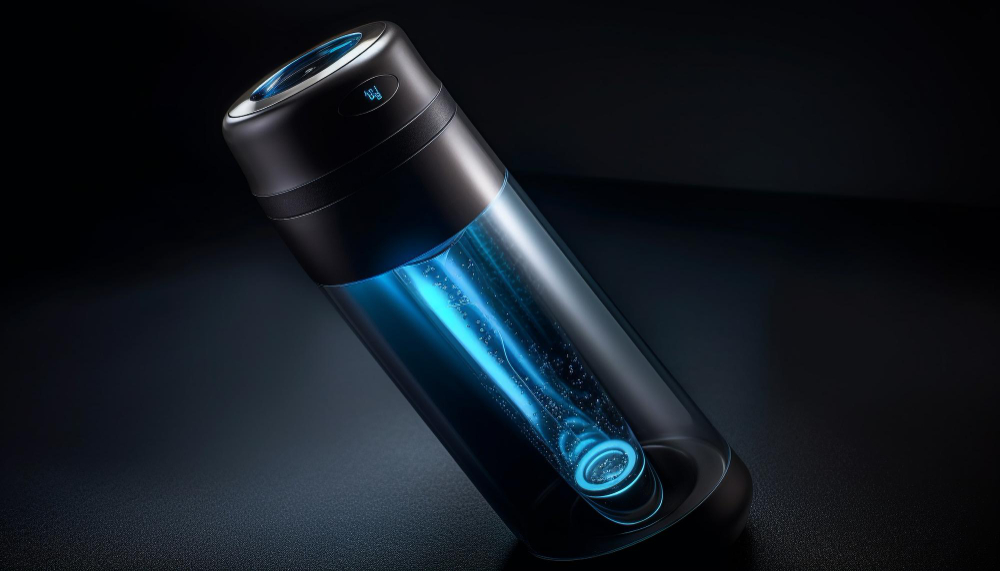
Certainly, while it might not be a catastrophic situation, encountering the inconvenience of settling in for some relaxation with your favorite TV shows at the end of a long day, only to find that your Insignia TV Remote Not Working? It Can Be Fixed Here, can be quite frustrating. If you’ve come across the issue of your Insignia TV Remote Not Working? It Can Be Fixed Here, there’s no need to despair just yet!
When you encounter a situation where your Insignia TV Remote Not Working? It Can Be Fixed Here, try removing its batteries for a brief 2-3 minutes and see if that resolves the issue. If that doesn’t do the trick, consider resetting your TV to re-establish the connection. And, as a standard practice, always double-check to ensure your batteries are still in good working condition. (Insignia TV Remote Not Working? It Can Be Fixed Here!)
Below, you’ll discover valuable guidance and expert advice for diagnosing, troubleshooting, and ultimately resolving issues with your insignia TV Remote Not Working? It Can Be Fixed Here. Let’s delve into it!
Insignia TV Remote Not Working? It Can Be Fixed Here
Let’s swiftly run through the potential culprits that could be causing issues with your remote:
- Your TV requires a reset and isn’t currently synced with the remote.
- Your remote needs to be replaced with your TV.
- The remote’s batteries have either disconnected or run out of power.
- Water might have infiltrated the remote.
- The remote could be damaged from repeated drops.
- There might be an obstruction impeding your TV’s receiver, preventing the remote from sending signals to the TV.
- High heat exposure could have caused internal electronic damage to your remote.
Understanding these potential causes is the first step towards resolving the problem with Insignia TV Remote Not Working? It Can Be Fixed Here.
Seven things to try to fix an Insignia Smart TV remote

Here are seven strategies to attempt in order to rectify issues with your Insignia Smart TV remote: If Insignia TV Remote Not Working? It Can Be Fixed Here
Perform A Basic Remote Reset

While it might seem surprisingly straightforward, this method often proves effective: (Insignia TV Remote Not Working? It Can Be Fixed Here)
- Remove the batteries from your remote.
- Wait patiently for 2-3 minutes.
- Reinsert the batteries.
- Remove the batteries from your Insignia remote to initiate a reset.
This uncomplicated action is akin to a soft reset, particularly on compact electronic devices like remotes.
Before delving into more intricate solutions, it’s worth giving this a try. There are no guarantees of success, but if it does work, you’ll likely be relieved you attempted it instead of resorting to purchasing a new remote. (Insignia TV Remote Not Working? It Can Be Fixed Here!)
Your Insignia Smart TV should be reset
Initiating troubleshooting with a power cycle is always a wise move. It goes beyond the standard on/off switch without the risk of erasing your settings as a factory reset would.
A factory reset, on the other hand, wipes all your data, essentially resetting your TV to its initial state as if it were brand new. Avoid this inconvenience by opting for a straightforward restart.
Insignia TV Remote Not Working? It Can Be Fixed Here To restart your Insignia TV effectively, follow these steps:
- Unplug the TV.
- Leave it disconnected for a full 60 seconds.
- While it remains unplugged, press and hold the power button on the TV for 30 seconds.
- Plug the TV back in.
Crucially, ensure that you’re holding the power button on your TV itself and not on the remote.
This procedure serves to drain any lingering power within the TV and facilitates a soft reset, distinguishing it from the mere on/off toggling of the remote.
Set Your Insignia Remote Back Up
Occasionally, your Insignia remote may Insignia TV Remote Not Working? It Can Be Fixed Here, causing it to cease functioning properly. If this happens, repairing your remote can often resolve the issue, and here are three distinct methods to achieve that:
If you possess an “enhanced” Insignia remote, remove the back cover of the remote. Beneath the batteries, you’ll find a pair button. Press and hold this pair button to re-establish the connection with your TV.
In the absence of a pairing button, attempt this alternative approach. Press and hold the home button on the remote for a full 30 seconds. Ensure that you’re pointing the remote directly at your TV and maintain continuous pressure on the button throughout the entire 30 seconds.
If neither of the previous options yields results, try this third method. Simultaneously press and hold the back button, the left navigation button, and the menu button on your remote for 30 seconds. Once again, be certain that your remote is aimed at the TV during this process.
These various approaches should help you repair your Insignia remote and get it back into working order.
Insignia Smart TV receiver: Check for Blockages
In certain instances, the culprit behind your non-responsive remote isn’t a system malfunction but rather an obstruction between the remote and the TV’s receiver. It’s a quirk of modern TV design, as the receivers are often discreetly integrated into the TV frame, unlike the more conspicuous ones on old CRT televisions.
This subtlety can create a challenge when it comes to aiming the remote correctly and discerning whether a piece of home decor inadvertently blocks the receiver’s line of sight. (Insignia TV Remote Not Working? It Can Be Fixed Here)
Before prematurely declaring your remote as irreparably damaged, it’s worthwhile to investigate and ensure that nothing is obstructing the TV’s receiver. Sometimes, the solution is surprisingly simple – a candle, a knick-knack, or even a piece of holiday decoration might have unknowingly inserted itself between your TV and the remote. Removing such obstructions can swiftly restore your remote’s functionality, and you’re back in action!
Verify the condition of the batteries

Insignia TV Remote Not Working? It Can Be Fixed Here To check the batteries in your remote, follow these steps:
- Open the Battery Compartment: Most remote controls have a battery compartment that can be opened. Look for a small latch or cover on the back or underside of the remote.
- Inspect Battery Orientation: Check the orientation of the batteries inside the compartment. There are usually markings (+ and -) to show you how to insert them correctly. Make sure they are properly aligned.
- Battery Connection: Ensure that the batteries are making proper contact with the metal connectors inside the compartment. If they appear loose or not properly connected, gently adjust them.
- Battery Voltage: If you have a battery tester or a multimeter, you can measure the voltage of the batteries. Alkaline batteries typically have a voltage of around 1.5 volts when they are fresh. If the voltage is significantly lower, it may be time to replace them.
- Replace Batteries: If the batteries are old or depleted, replace them with new ones of the same type (e.g., AA or AAA). Make sure to insert them in the correct orientation.
- Check for Corrosion: Sometimes, batteries can leak and cause corrosion inside the battery compartment. If you see any white or greenish residue, clean it carefully using a cotton swab and some rubbing alcohol.
- Close Compartment: After confirming that the batteries are properly connected and in good condition, close the battery compartment securely.
- Test the Remote: Point the remote at the device you want to control (e.g., TV) and press the buttons to see if it responds as expected. If the remote still doesn’t work, you may need to troubleshoot further or consider getting a replacement remote or seeking professional assistance.
By following these steps, you can ensure that the batteries in your remote control are properly connected and have sufficient power.
Inspect for Water Damage
To inspect your remote control for water damage, follow these steps: Insignia TV Remote Not Working? It Can Be Fixed Here
- Power Off: Before handling the remote, make sure it’s not currently in use and is powered off.
- Remove Batteries: Open the battery compartment and remove the batteries if you haven’t done so already.
- Visual Inspection: Carefully examine the entire remote, paying close attention to the following areas: a. Battery Compartment: Check for any moisture or water droplets inside the battery compartment. If you see any, it’s a sign of water intrusion. b. Buttons and Casing: Look for any visible signs of water damage on the buttons and the outer casing of the remote. This includes water stains, discoloration, or warping. c. Circuitry: If you can safely open the remote (some remotes can be disassembled), inspect the internal circuitry for water damage. Look for corrosion or any visible signs of moisture on the circuit board.
- Clean and Dry: If you find any signs of water damage, it’s essential to clean and dry the remote as soon as possible to prevent further damage. Here’s how: a. Wipe Clean: Use a soft, lint-free cloth or a cotton swab to gently wipe away any moisture or residue on the remote’s surface. b. Air Dry: Leave the remote open and exposed to dry air for several hours. Avoid using a hairdryer or any direct heat source, as excessive heat can damage the internal components. c. Silica Gel: Placing the remote in a bag or container filled with silica gel packets can help absorb any remaining moisture. Rice can also be used as an alternative desiccant.
- Reassemble and Test: After ensuring that the remote is completely dry, reassemble it, insert fresh batteries, and test it with the device it controls to see if it functions correctly.
- Seek Professional Help: If the remote still doesn’t work or if you suspect that water damage has affected the internal components, it may be necessary to seek professional repair or consider replacing the remote.
Inspecting your remote control for water damage and taking appropriate action promptly can help prevent further damage and increase the chances of restoring its functionality.
Assess for Physical Damage
To assess your remote control for physical damage, follow these steps: Insignia TV Remote Not Working? It Can Be Fixed Here
- Examine the Exterior: Start by visually inspecting the exterior of the remote for any visible signs of physical damage, such as cracks, dents, or scratches. Pay close attention to the buttons, casing, and screen (if applicable).
- Check for Loose Parts: Gently shake the remote and listen for any rattling or loose parts inside. This could indicate internal damage.
- Button Functionality: Test each button on the remote to make sure they all respond when pressed. If any buttons feel mushy, unresponsive, or are stuck in a pressed position, it’s a sign of physical damage.
- Battery Compartment: Inspect the battery compartment for any damage, such as bent or broken connectors, or signs of corrosion that could be a result of a damaged battery leaking.
- Screen (If Applicable): If your remote has an LCD or LED screen, check it for cracks, lines, or areas where the display is distorted or Insignia TV Remote Not Working? It Can Be Fixed Here correctly.
- Casing Alignment: Ensure that the casing of the remote is properly aligned and closed. The misaligned casing may indicate that the remote was dropped or subjected to physical stress.
- Check for Functionality: Insert fresh batteries and test the remote with the device it controls. Make sure it performs all its functions correctly. Pay close attention to any performance anomalies.
- Seek Professional Repair: If you discover any physical damage or functionality issues that you cannot repair yourself, it may be necessary to seek professional repair or consider replacing the remote, depending on the extent of the damage.
- Prevent Further Damage: To prevent further damage, handle the remote with care and avoid dropping it or subjecting it to excessive physical stress in the future.
Assessing your remote control for physical damage is essential to identify any issues that may affect its performance. Taking prompt action to repair or replace a damaged remote can ensure continued functionality and a better user experience.
Remove Obstructions
To ensure that your remote control’s signal reaches your TV’s receiver without obstruction, follow these steps:
- Clear Line of Sight: Make sure there is a clear, unobstructed line of sight between the remote control and the TV’s receiver. Remove any objects, obstacles, or clutter that may be blocking the signal path.
- Check for Furniture Placement: Ensure that furniture, such as tables, shelves, or decorations, is not blocking the path between the remote and the TV. Adjust the placement of furniture if necessary to create a clear line of sight.
- Position Yourself Properly: When using the remote, be in a position where you have a direct line of sight to the TV’s receiver. Avoid sitting or standing in a way that obstructs the signal path.
- Clean the Remote and Receiver: Dust and dirt on the remote control or the TV’s receiver can sometimes interfere with the signal. Clean both the remote control’s infrared (IR) transmitter and the receiver’s IR sensor with a soft, lint-free cloth.
- Check for Interference: Other electronic devices emitting infrared signals, such as fluorescent lights or other remote controls, can interfere with your TV’s receiver. Try using the remote in a different location or turning off nearby devices to see if it improves signal reception.
- Replace Batteries: Weak or depleted batteries can reduce the strength of the remote’s signal. If you haven’t already, make sure you have fresh batteries in the remote.
- Use an IR Extender: If you have persistent signal reception problems due to obstructions, you can consider using an IR extender or repeater. This device captures the signal from your remote and relays it to the TV’s receiver using a wired or wireless connection, bypassing obstacles.
- Inspect for Damaged Components: Check the remote control and TV’s receiver for any physical damage to their IR components. If you notice any damage, it may require repair or replacement.
- Try a Universal Remote: If your remote still has trouble reaching the TV’s receiver, consider using a universal remote control that may have a more powerful signal or a different technology.
By following these steps and ensuring a clear line of sight between your remote control and your TV’s receiver, you can help prevent signal obstructions and improve the remote’s functionality.
Avoid High Heat
To protect your remote control from exposure to high temperatures, which can harm its internal electronics, follow these guidelines:
- Store Properly: When not in use, store your remote control in a cool and dry place. Avoid leaving it in areas where temperatures can become excessively high, such as near radiators, heaters, or in direct sunlight.
- Car Interiors: If you use a remote control in your car, be mindful of extreme temperatures. In hot weather, avoid leaving the remote on the dashboard or in direct sunlight, as the inside of a car can become extremely hot and damage the electronics.
- Outdoor Use: If you’re using your remote control outdoors, such as for a patio TV or home entertainment system, consider using protective covers or enclosures to shield it from direct sunlight and other environmental factors.
- Battery Care: High temperatures can also affect the performance and lifespan of the batteries inside your remote. Store spare batteries in a cool, dry place, and replace them regularly to ensure optimal performance.
- Traveling: When traveling with your remote control, especially in hot climates, store it in a protective case or pouch to shield it from temperature extremes and potential physical damage.
- Air Conditioning: If you have central air conditioning or a cooling system, use it to maintain a comfortable temperature in your home, which can also help protect your electronics from overheating.
- Avoid Extreme Cold: Similarly, extreme cold temperatures can also affect electronic devices. Avoid exposing your remote control to extreme cold for extended periods.
- Regular Maintenance: Periodically inspect your remote control for signs of damage or wear. Check for cracked casings, loose buttons, or other issues that may be exacerbated by temperature-related stress.
- Use a Universal Remote: If you find that your remote control is frequently exposed to high temperatures or other harsh conditions, consider using a universal remote control as a backup. This way, you can keep your primary remote in a more controlled environment.
By following these precautions and avoiding exposure to high temperatures, you can help prolong the life and functionality of your remote control and other electronic devices.

1 thought on “Insignia TV Remote Not Working? It Can Be Fixed Here!”